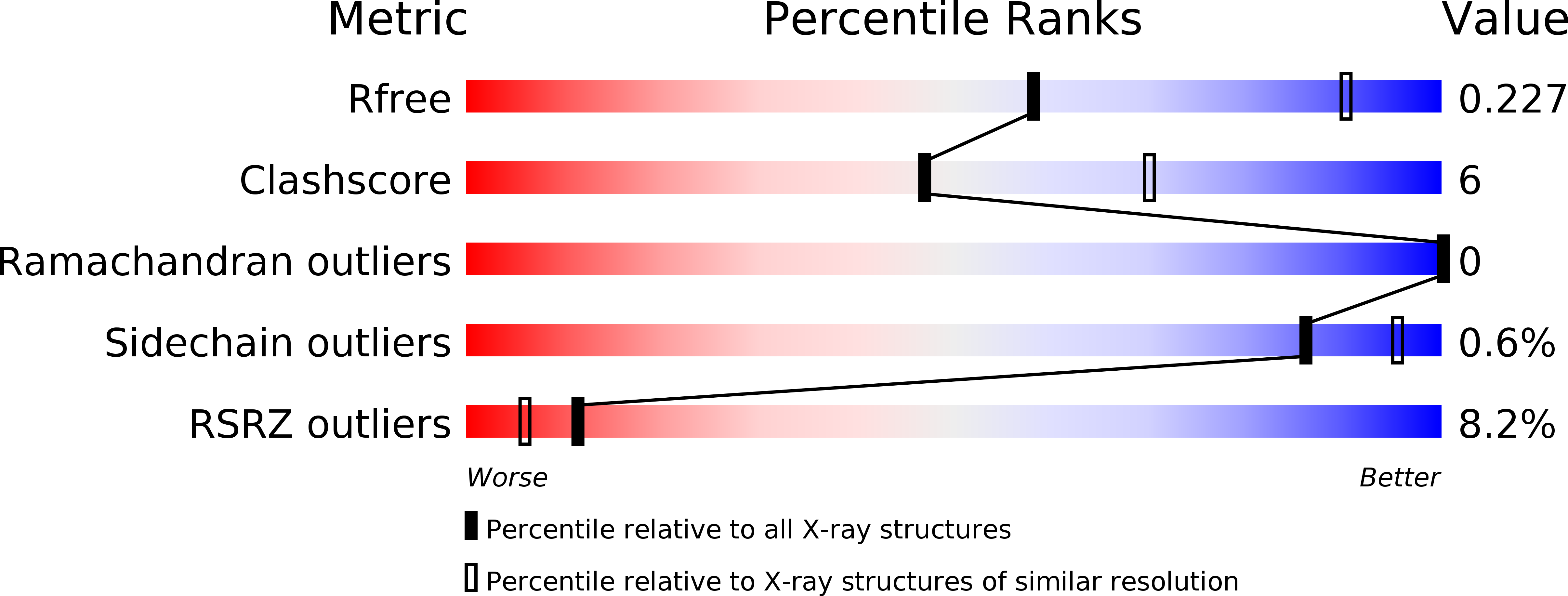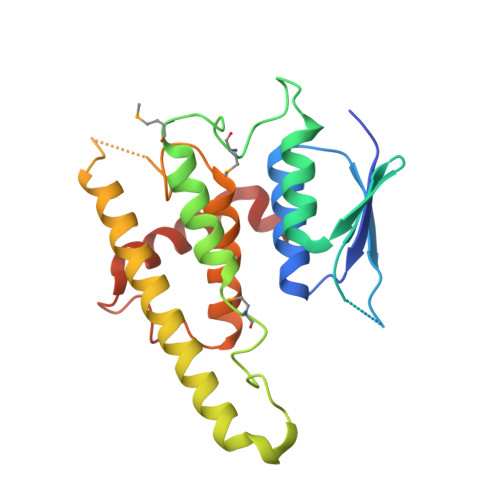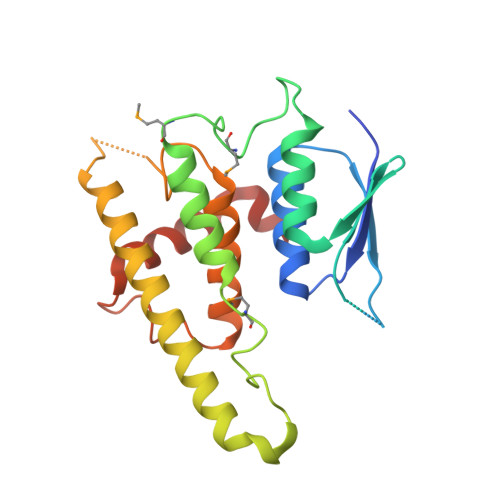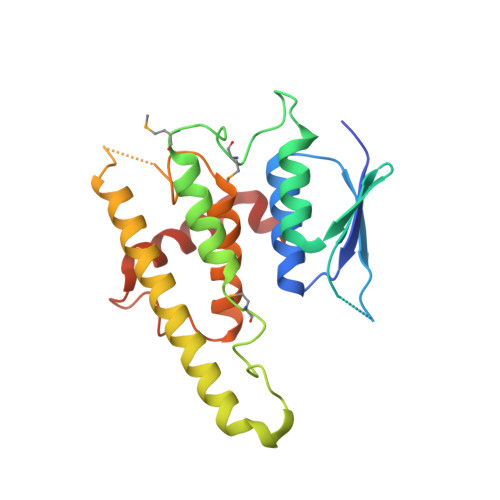Structural and functional divergence of GDAP1 from the glutathione S-transferase superfamily.
Googins, M.R., Woghiren-Afegbua, A.O., Calderon, M., St Croix, C.M., Kiselyov, K.I., VanDemark, A.P.(2020) FASEB J 34: 7192-7207
- PubMed: 32274853
- DOI: https://doi.org/10.1096/fj.202000110R
- Primary Citation of Related Structures:
6UIH - PubMed Abstract:
Mutations in ganglioside-induced differentiation-associated protein 1 (GDAP1) alter mitochondrial morphology and result in several subtypes of the inherited peripheral neuropathy Charcot-Marie-Tooth disease; however, the mechanism by which GDAP1 functions has remained elusive. GDAP1 contains primary sequence homology to the GST superfamily; however, the question of whether GDAP1 is an active GST has not been clearly resolved. Here, we present biochemical evidence, suggesting that GDAP1 has lost the ability to bind glutathione without a loss of substrate binding activity. We have revealed that the α-loop, located within the H-site motif is the primary determinant for substrate binding. Using structural data of GDAP1, we have found that critical residues and configurations in the G-site which canonically interact with glutathione are altered in GDAP1, rendering it incapable of binding glutathione. Last, we have found that the overexpression of GDAP1 in HeLa cells results in a mitochondrial phenotype which is distinct from oxidative stress-induced mitochondrial fragmentation. This phenotype is dependent on the presence of the transmembrane domain, as well as a unique hydrophobic domain that is not found in canonical GSTs. Together, we data point toward a non-enzymatic role for GDAP1, such as a sensor or receptor.
Organizational Affiliation:
Department of Biological Sciences, University of Pittsburgh, Pittsburgh, PA, USA.

















